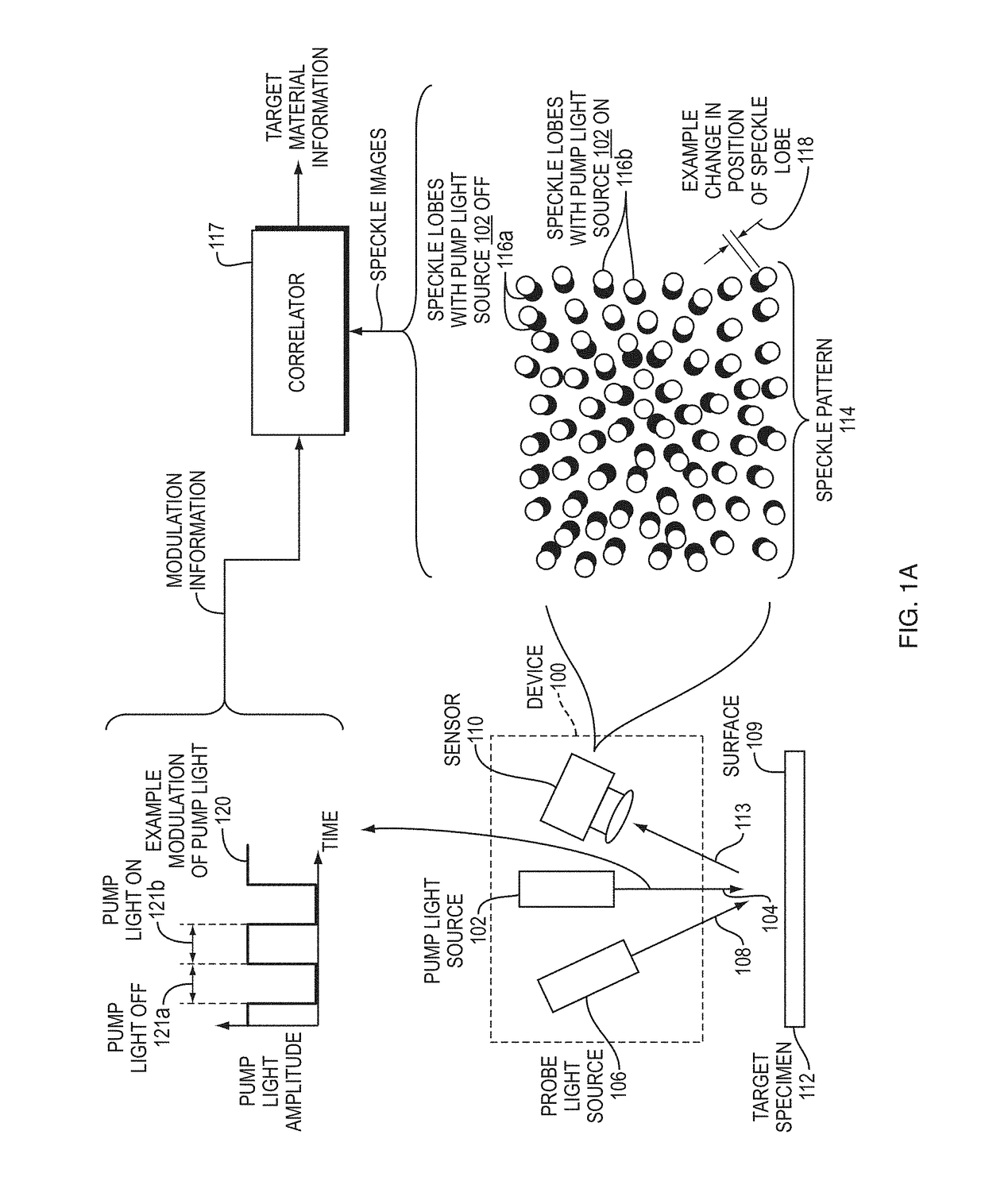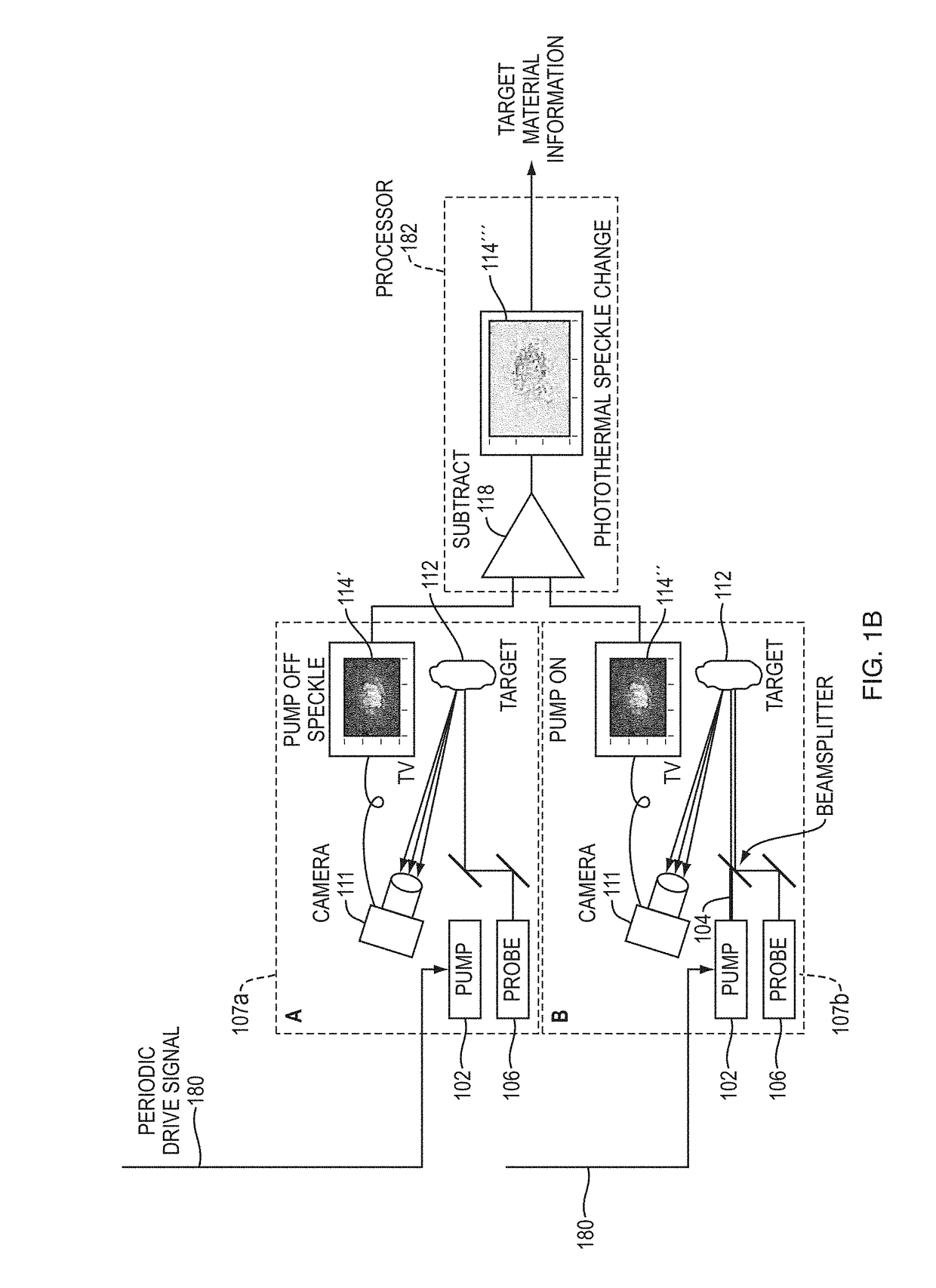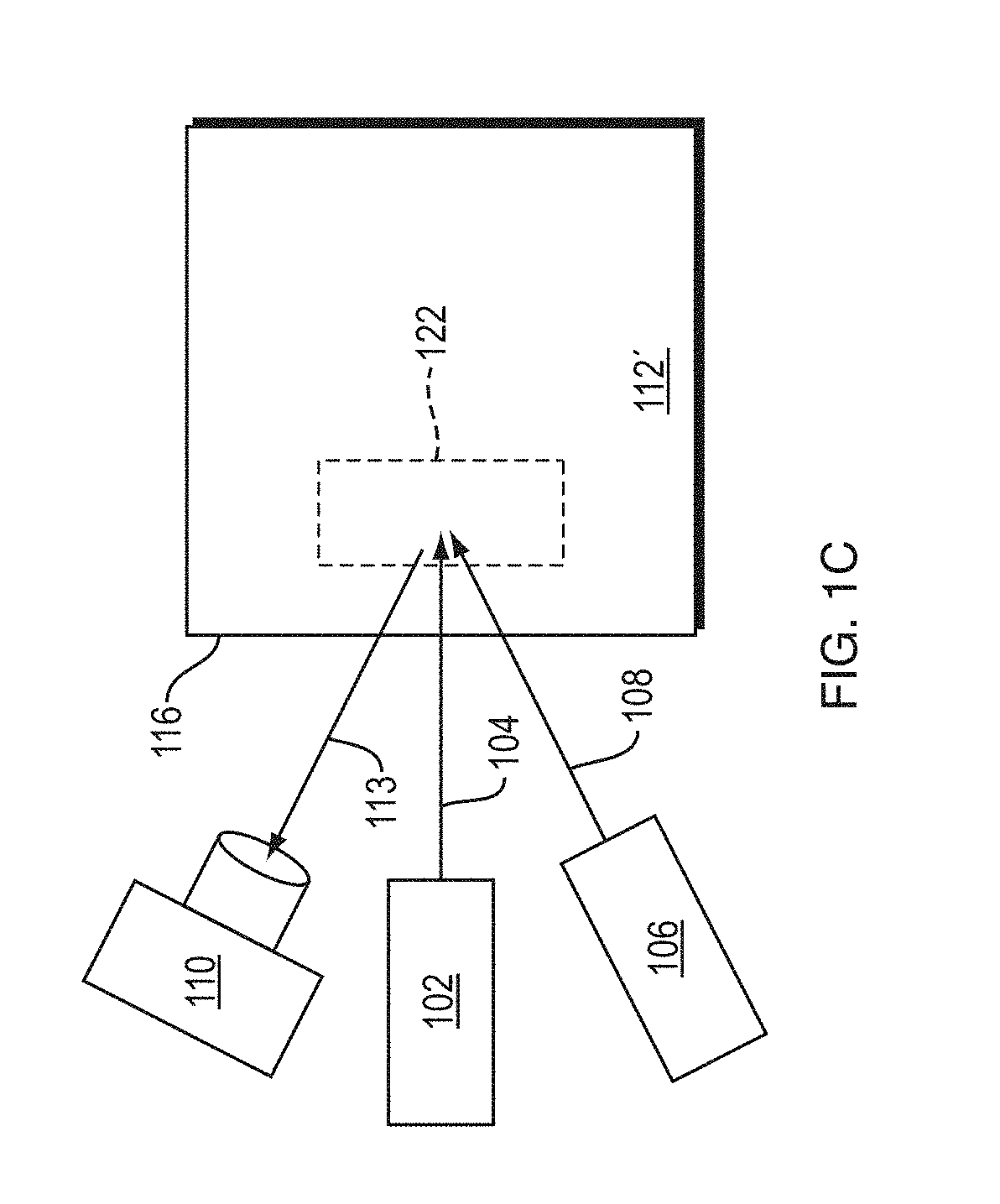Devices and methods for sensing targets using photothermal speckle detection
- Summary
- Abstract
- Description
- Claims
- Application Information
AI Technical Summary
Benefits of technology
Problems solved by technology
Method used
Image
Examples
Embodiment Construction
[0053]A description of example embodiments of the invention follows.
[0054]The current disclosure describes methods and devices for obtaining optical absorption information for materials on surfaces in a non-contact manner using laser illumination. Embodiments can be used for detecting contamination of surfaces with hazardous materials (e.g. explosives or chemical warfare agents) or for doing material identification (e.g., of paints or other coatings). Embodiment devices and methods can also be used to nondestructively test surfaces for variation in optical absorption, thermal diffusivity, and to detect subsurface features that cause variation in the response of the surface to the absorption of illuminating radiation.
[0055]Embodiments can take advantage of photothermal modulation of a laser speckle pattern emanating from a surface of a target specimen, which is also referred to herein as “photothermal speckle modulation” (PSM). The approach can include simultaneous illumination of th...
PUM
 Login to View More
Login to View More Abstract
Description
Claims
Application Information
 Login to View More
Login to View More - R&D
- Intellectual Property
- Life Sciences
- Materials
- Tech Scout
- Unparalleled Data Quality
- Higher Quality Content
- 60% Fewer Hallucinations
Browse by: Latest US Patents, China's latest patents, Technical Efficacy Thesaurus, Application Domain, Technology Topic, Popular Technical Reports.
© 2025 PatSnap. All rights reserved.Legal|Privacy policy|Modern Slavery Act Transparency Statement|Sitemap|About US| Contact US: help@patsnap.com



